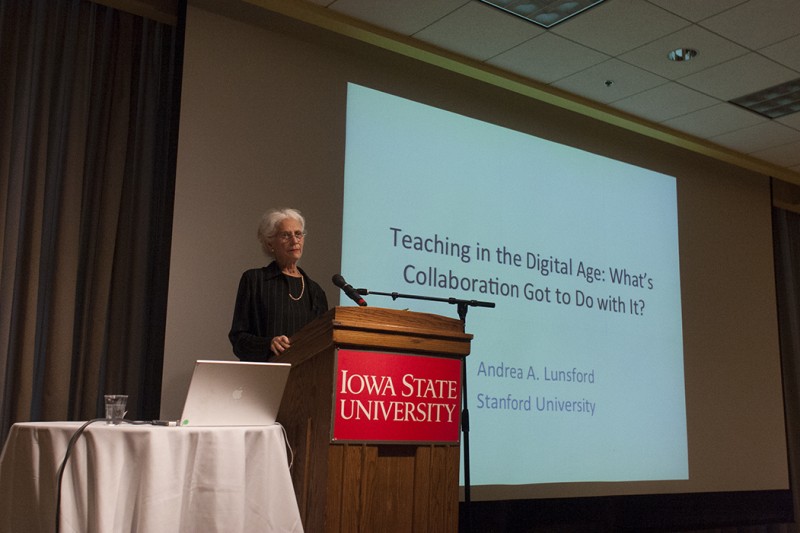Literacy ‘rock star’ challenges lecture format in classrooms
September 10, 2012
For years, college education techniques consisted of the “teacher-sponge” method. Students were the sponges for information, assumed to absorb all the information thrown at them during a teacher’s lecture. But as Andrea Lunsford, director of the Program in Writing and Rhetoric at Stanford, said in her seminar, however, the digital age presents new prospects for student participation.
As part of the 2012 Goldtrap Lecture series, Lunsford spoke Thursday, Sept. 6, about the place of technology in the classroom in “Teaching in the Digital Age: What’s Collaboration Got to Do With It?”
As Lunsford is working to change the way the classroom works, she is already making an impact at Iowa State. “The Everyday Writer,” by Lunsford, is a commonplace textbook for composition classrooms.
Lunsford, who has contributed to the authorship of 14 books on writing, believes that allowing students to collaborate on writing assignments is the most beneficial way of teaching.
“You are in the midst of [the] largest literacy revolution that I have seen in 25 years,” Lunsford said. “In the digital age, audiences can and do often become collaborators.”
In these digital days, the usage of social network sites to encourage public student writing has grown immensely.
“The way that these sites of writing have changed opportunities for writers is ground shaking, earth shattering,” Lunsford said. “Students are more and more used to thinking of themselves as part of a network of people … rather than as individual authors.”
Referred to as a “rockstar” of English, Lunsford firmly advocates allowing students to work together and teach each other is more advantageous than having an expert tell learners how to write. Lunsford believes universities focus too much on the individual aspect of learning: the GPAs and rewards.
Quoting an article from the Atlantic by Richard Floyd, “Today’s students need a stronger focus on teamwork, persuasion, entrepreneurship: a better integration of liberal arts with technological literacy. … That makes for creative collaboration and leadership.”
Nicole Smith, sophomore in linguistics, believes a combination of lecturing and team learning is the best approach.
“I definitely think the group work helps. In linguistics, we do a lot of group work, just conversational, and that really helps,” Smith said. “You can tell a big difference in learning with a group compared to learning alone.”
Kathie Gossett, assistant professor in English rhetoric and professional communication, agreed with the heart of Lunsford’s message.
“Especially when you’re working with someone at your same level,” Gossett said. “It’s easier to share ideas and put ideas out there with someone of your own age; it’s not as scary.”
To Lunsford, the future of education lies not with traditional methods but with students working together to learn outside the lines.
“Collaboration has everything to do with it,” Lunsford said.

















